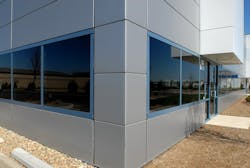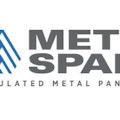Prescriptive Vs. Performance Building Codes
Building codes are a set of regulations that govern the design, construction, and alteration of structures. A general understanding of building codes helps all parties involved in design and construction understand the specific requirements involved in compliance, preventing errors, delays, cost overruns and most importantly, ensure public safety. There are two primary paths for compliance: prescriptive and performance building codes.
Prescriptive Building Codes
Many sections of building codes are prescriptive, and many projects take this path to demonstrate compliance with safety and performance standards. This approach requires that each element of a building has a minimum acceptable standard. For example, when reviewing energy codes, prescriptive tables require a specific insulation value for different types of wall and roof construction across different climate zones. These tables typically list R and or U-values that are required as minimums for the walls, windows, and roof. When using the prescriptive path to energy code compliance, this method doesn’t require conducting calculations and merely involves following a chart.
Performance Building Codes
Using performance pathways to establish energy code compliance requires “modeling” the building to predict energy usage against an acceptable baseline. This modeling is performed by using commonly available software that creates a “virtual” building, then uses historical weather information to predict how it would perform under those conditions. There are two different types of performance pathways. The first is referred to as the envelope trade-off method. This method allows the building designer to make trade-offs between various components of the building envelope. If certain building elements perform especially well, it allows more leniency with other elements. For example, if the walls have thicker than required insulation, it might allow the building to have less insulation in the roof, or perhaps less efficient windows or doors than what might be allowed under the prescriptive approach. The second performance method allows the designer to make trade-offs between the building envelope components and the various systems used to heat, cool and light the building. This method also requires the use of computer modeling to establish energy code compliance.
When using insulated metal panels and the prescriptive tables, it is critical to use U-values instead of R-values to determine the level of insulation required. This is because the R-value prescriptive tables in the code are based on fiberglass batts in combination with rigid insulation boards. IMPs are much more efficient than fibrous insulation systems, and there is very little drop-off between rated and in-place R-values. Using U-value tables take this into account and provide a more accurate depiction of IMP performance.
When using the performance pathways to energy code compliance, IMP U-values are entered into the model, allowing the building designer to optimize the various building components, equipment and assemblies, saving money, time and operating expenses.
Want to learn more about meeting energy codes for your next project with insulated metal panels? Speak with an expert from Metl-Span today.


